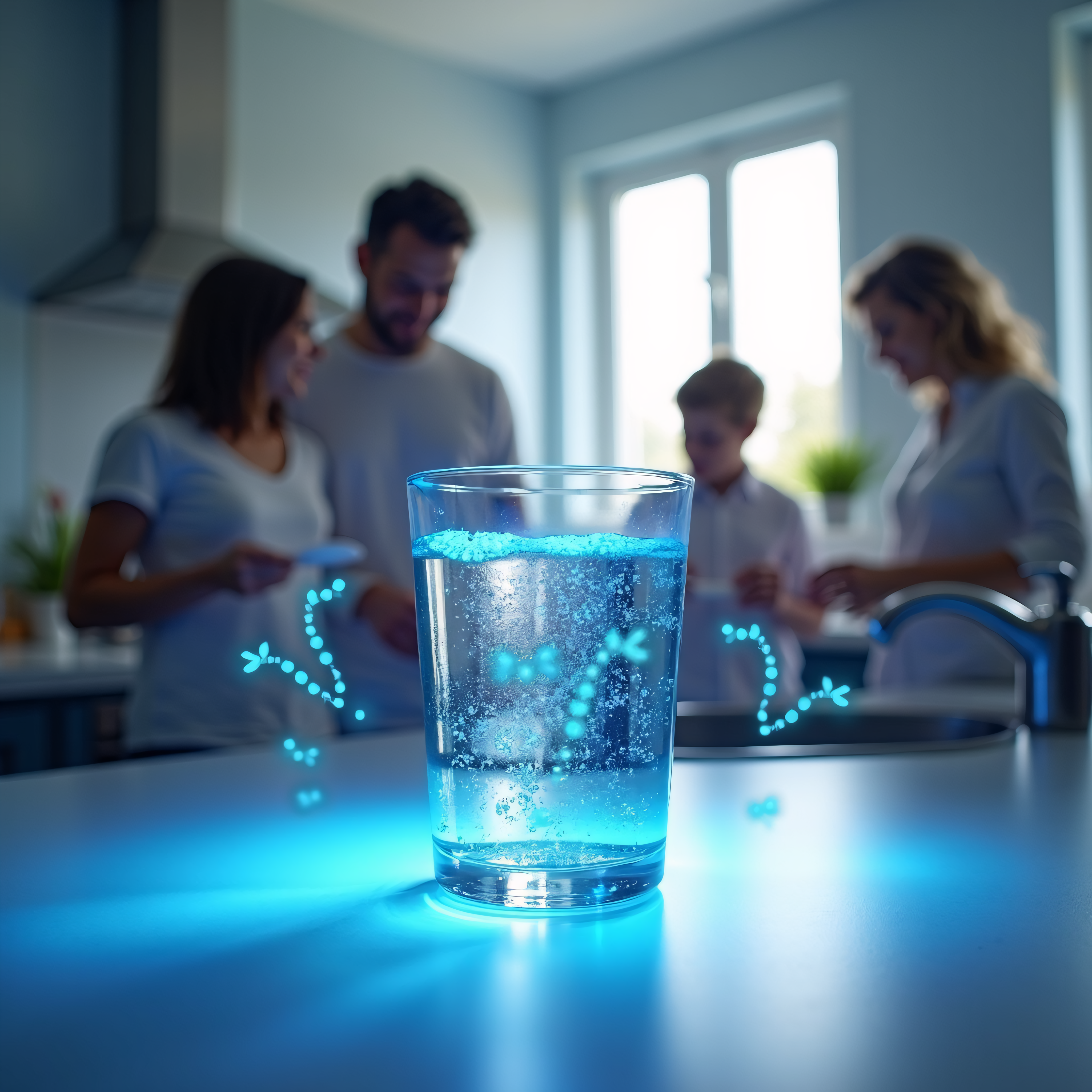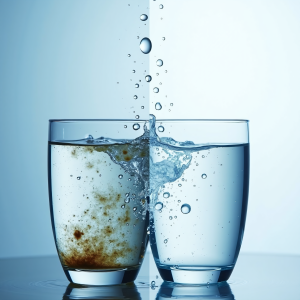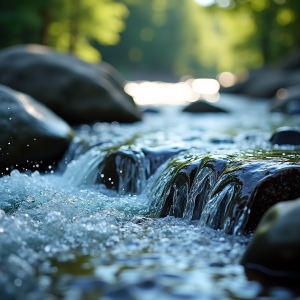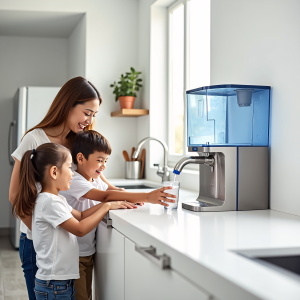estimated reading time: 8 minutes
Understanding Water Contamination & The Need for Purification
UV (ultraviolet) disinfection is a chemical-free process that uses UV-C light to neutralize harmful microorganisms in water, rendering them unable to reproduce and cause illness. It’s a silent guardian, working at a microscopic level to protect your family’s health. But is it the right choice for you? The fundamental principle relies on disrupting the DNA of these microorganisms – bacteria, viruses, and protozoa – preventing them from replicating. Unlike chlorination, UV purification doesn’t add anything to your water, leaving no taste or odor behind, and crucially, it doesn’t create harmful disinfection byproducts.
What is UV Water Purification? – How it Works
A UV water purifier uses a UV-C lamp encased in a quartz sleeve. Water flows around this sleeve, exposing microorganisms to the UV-C light. The UV-C light damages the DNA and RNA of these organisms, preventing them from reproducing. It’s a rapid process, typically taking only a few seconds, and highly effective against a wide range of pathogens. However, it’s crucial to understand that UV purification only disinfects – it doesn’t remove sediments, chemicals, or heavy metals. Therefore, UV purifiers are often used in conjunction with pre-filters (sediment filters, carbon filters) to address a broader spectrum of contaminants. Key specifications to consider include the UV lamp wattage and flow rate. A higher wattage lamp generally provides more disinfection power, while the flow rate determines how much water can be treated per minute.
Source: https://www.epa.gov/safewater/test-your-water
UV Water Purifier vs. RO Purifier – Which One is Right for You?
This is a common question. RO (Reverse Osmosis) systems offer comprehensive filtration, removing dissolved solids, chemicals, and microorganisms. They use a membrane to physically separate these impurities from the water. This results in very pure water, but also generates wastewater – typically around 3-4 gallons for every gallon of purified water. UV purifiers, on the other hand, produce no wastewater and require less maintenance.
Here’s a breakdown:
- Contaminant Removal: RO excels at removing a very wide array of contaminants, including salts, minerals, and chemicals. UV specifically targets microorganisms.
- Maintenance: UV purifiers require annual lamp replacement, while RO systems need regular filter changes (pre-filter, RO membrane, post-filter).
- Cost: Initial costs for UV purifiers are often lower than RO systems, but RO systems may offer better long-term value if you have severely contaminated water.
- Water Waste: RO systems generate significant wastewater. UV purifiers do not.
- Water Taste: RO water can sometimes taste “flat” due to the removal of minerals. UV purification preserves the natural mineral content of the water.
Consider your specific needs. If you are concerned about bacteria and viruses, but your water is relatively free of chemicals and sediment, a UV purifier is a good starting point. If you have hard water, or your water is heavily contaminated with chemicals, an RO system may be more appropriate. Many households choose to combine both technologies, using a sediment/carbon pre-filter, followed by an RO system, and finishing with a UV sterilizer for ultimate peace of mind. Check out wide range of Purifiers for your need on Amazon.
Source: https://www.cdc.gov/healthywater/drinking_water/index.html
Exploring UV Purifier Brands: Kent & Nrich
While numerous brands offer UV purifiers, Kent and Nrich are prominent players in the Indian market. Kent UV purifiers often combine UV disinfection with UF (Ultrafiltration) membrane technology, offering a good balance between disinfection and sediment removal. Models like the Kent Pearl are known for their compact design and multiple purification stages. Nrich UV purifiers, as highlighted by nrichwater.com, utilize UV treatment as part of their overall water purification system for bottled water production. They don’t currently offer the same range of point-of-use home water purifiers as Kent, but their involvement demonstrates the effectiveness of UV in ensuring water safety.
Source: https://nrichwater.com/ Most reviewed Nrich Purifiers on Amazon
Source: https://www.kent.co.in/ Most reviewed Kent Purifiers on Amazon
Price Guide & Factors Affecting Cost
The price of a UV water purifier can vary significantly based on flow rate, features, and brand. Basic UV purifiers can start around ₹5,000 (approximately $60 USD), while more advanced models with multiple filtration stages can cost upwards of ₹15,000 (approximately $180 USD). Factors impacting cost include the UV lamp wattage, the presence of pre-filters, the type of housing material, and the installation complexity. Higher flow rate units suitable for whole-house purification will generally be more expensive than smaller, under-sink models. It’s also important to consider the ongoing cost of replacement lamps and filters when calculating the total cost of ownership.
Installation & Maintenance of UV Water Purifiers
Installation is generally straightforward and can often be done DIY, providing the unit is being installed on an already plumbed water line. However, professional installation may be preferred, especially for more complex systems. Maintenance is relatively simple: annual UV lamp replacement is the primary requirement. Pre-filters should be changed regularly (typically every 6-12 months) depending on water quality. Always follow the manufacturer’s instructions for filter replacement and lamp disposal. Consider setting a reminder on your calendar to ensure timely maintenance.
Is a UV Water Purifier the Right Choice for You?
If your primary concern is eliminating bacteria and viruses, and your water source is already relatively clear of sediment and chemicals, a UV water purifier is an excellent choice. It’s a cost-effective, chemical-free solution that provides peace of mind. However, if your water source is heavily contaminated with sediment, chemicals, or dissolved solids, an RO system or a combination of filtration methods may be more appropriate.
Ready take next step cleaner, healthier water? Browse expertly curated selection top-rated water purifiers take advantage of exclusive discounts! Check out our blog post on Kent, Aquaguard , Gravity filters and Livpure Or, still unsure of filter system right you, check out our blogs on A Comprehensive Guide to Water Purification
Frequently Asked Questions About UV Light & Protection
Q: What exactly is UV radiation, and why is all the fuss about UV exposure?
UV radiation, or ultraviolet radiation, is a form of electromagnetic energy emitted by the sun (and artificial sources). While essential for Vitamin D production, UV rays can damage skin cells, leading to premature aging, sunburn, and significantly increasing your risk of skin cancer. Understanding UV index levels helps gauge daily risk and plan protection.
Q: What’s the difference between UVA and UVB rays, and which are more harmful?
Both UVA and UVB rays are concerning, but impact skin differently. UVB is primarily responsible for sunburn, while UVA penetrates deeper, contributing to wrinkles and long-term skin damage. Both types contribute to skin cancer development. Effective sunscreen should protect against both UVA and UVB for comprehensive UV protection.
Q: How does the UV index work, and what level should prompt extra caution?
The UV index is a daily forecast of the strength of ultraviolet radiation. It ranges from 0-11+, with higher numbers indicating a greater risk. A UV index of 3-7 requires sun protection measures like hats and sunscreen. Above 8, extra precautions – seeking shade and wearing protective clothing – are crucial to avoid sun damage.
Q: Can I still get sun damage on cloudy days? Is UV protection still needed then?
Absolutely. Clouds filter some, but not all, UV radiation. Up to 80% of UV rays can penetrate clouds, meaning you’re still susceptible to sunburn and skin aging even on overcast days. Daily sunscreen application with a broad-spectrum SPF is essential year-round, regardless of the weather.
Q: What kind of sunscreen is best, and how often should I reapply for effective UV protection?
Look for “broad spectrum” sunscreen with an SPF of 30 or higher to protect against both UVA and UVB rays. Mineral sunscreens containing zinc oxide or titanium dioxide are excellent choices. Reapply generously every two hours, and immediately after swimming or sweating, to maintain optimal sun protection and prevent UV damage.
Q: Beyond sunscreen, what other methods can I use to minimize my UV exposure?
Combine sunscreen with protective clothing – long sleeves, pants, and wide-brimmed hats. Seek shade, particularly during peak sunlight hours (10 am – 4 pm). UV-blocking sunglasses protect your eyes from UV ray damage, which can lead to cataracts. Remember, layers of defense are best for complete UV safety.



